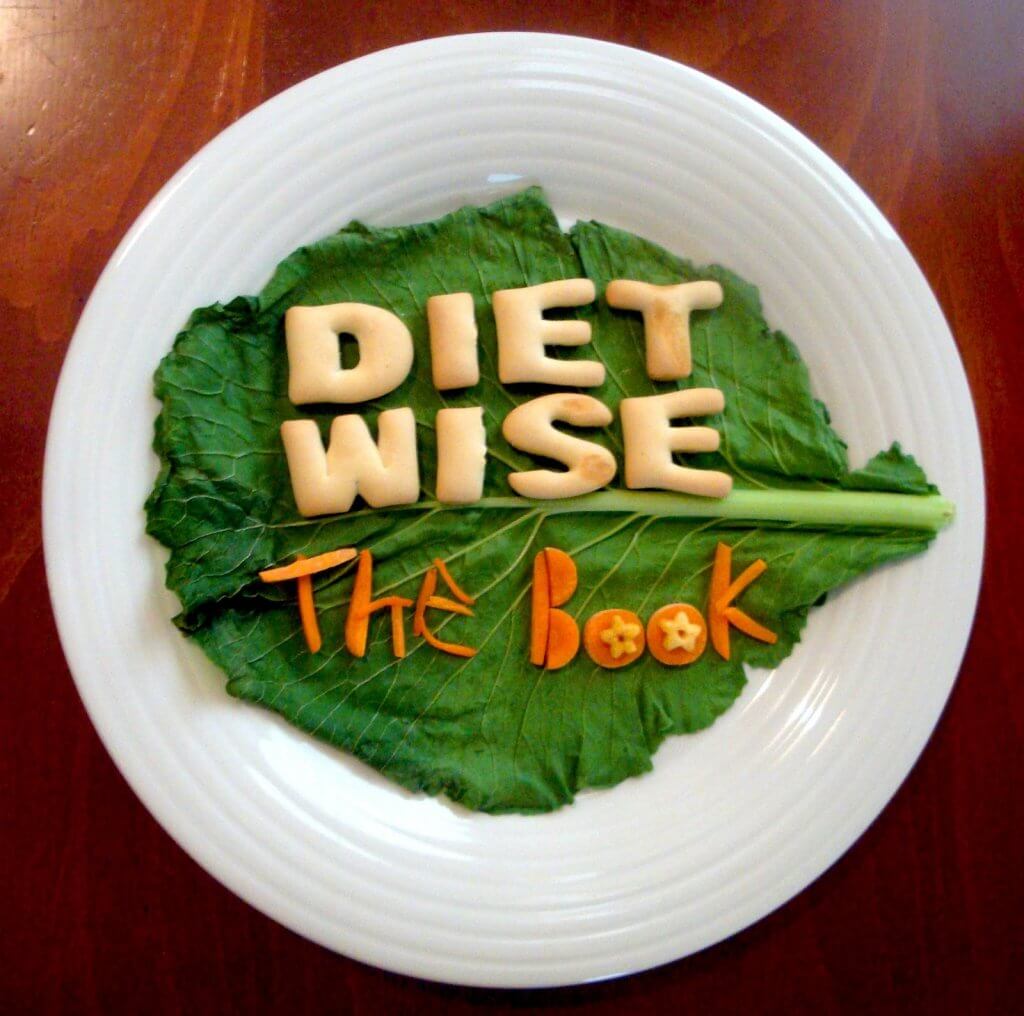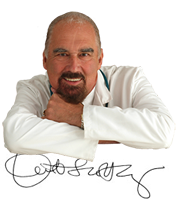Most of my friends know I was a number #1 pioneer in the field of what to eat: meaning individualized eating.
For almost 40 years I’ve been pointing out that what works and is safe and healthy for one individual could kill someone else. Under the banner of “food allergies” I streaked ahead, showing that we are all different: I mean REALLY all different. I have seen people sick almost unto death with foods that the rest of us eat with impunity.
And I don’t mean peanuts, etc. I mean tomatoes, carrots, lettuce, celery, quail’s eggs… even water from different spring sources.
In fact by 1985 I had formed an important rule, which is: THERE ARE NO RULES. Any food can be highly allergic for any individual and there is no way to guess. You have to figure it out to a plan. You have to do it right and, if you do, the reward is a long life of good health.
I have seen miracles of transformation, from crippling skin rashes, behaviors that would land an individual in jail, kids becoming unschoolable, ruined sex lives, migraines that make a person want to end it all, to schizophrenia, depression, anxiety states, violence and hallucinations that could lead a patient to a lifetime of drugs and possible incarceration in the psychiatric system.
I HAVE SEEN IT ALL, TRUST ME!
I wrote a self-help book: initially called the “Food Allergy Plan” (1985). Later I revised it and published it as DIET WISE (www.dietwisebook.com). Latterly I’ve re-titled it again as One Diet For Life (onediet4life.com)

Well… science has finally caught up with me and my peers. SUDDENLY, there is an explosion of science and up-to-date studies showing what I have ALWAYS said: The One-Size-Fits-All “Healthy Diet” is a myth. THERE IS NO SUCH DIET. For every person who improves in the South Beach Diet, the gluten-free diet, vegetarianism, FODMAPS, the metabolic diet plan, low-carb diet, blood groups diet, or any other set plan, there is one or more individuals who are made sick by the same plan.
I am talking every individual’s unique eating plan, that works for him or her, and is what their particular body is happy with. YOUR perfect plan.
Now we have a name for it: Precision Nutrition. Even the US National Institutes of Health have adopted this term. My oh my, how time moves on. I was called a quack for this idea in 1983. Now it’s official! I could have come up with something better for a label but apparently, this is now the buzz phrase.
Actually, I’ll tell you a little secret: this “new” idea is over 2,000 years old! The idea of diet as a major determinant of health goes back to at least the ancient world, with Hippocrates’ supposed dictum “let food be your medicine”.
Scientific attempts to define a healthy diet date back to the 1890s, when nutrition pioneer Wilbur Atwater at Wesleyan University in Connecticut published the first ever dietary guidelines. He recommended variety, moderation and the avoidance of too much fat, sugar and starch. That advice has largely stood the test of time, along with its underlying assumption that there really is such a thing as a healthy diet. But now, 125 years of nutritional orthodoxy is being chewed up.
Fast Forward From My Pioneer Days In The 1980s And We Now Have…
Research from geneticist Tim Spector of King’s College London and a team at the Weizmann Institute of Science in Israel, who have looked at the effect of meals on blood sugar and insulin spikes. OK a very narrow target view. But it’s a start, bless ‘em!
To their utter astonishment (because, I presume, they never read one of my early books!) researchers found that people responded differently to a standardized meal.
For example, immunologist Eran Elinav and mathematician Eran Segal were specifically interested in whether sweeteners were actually worsening the epidemics of obesity and diabetes that these substances were supposed to be helping to cure. So they and their colleagues fed saccharin to healthy human subjects and watched what happened to the patient’s blood sugar.
Did the blood sugar rise sharply, or not?
What should have happened, according to current theory, is that there are “zero calories” or carbs in saccharin, therefore blood sugar should remain stationary—at similar levels.
But that’s not what happened!
Instead blood sugars shot up all over the place, quite randomly, among the study participants! Moreover glycaemic responses aren’t supposed to vary much from person to person. There is scope for some individual variation, but people given the same foods are expected to have broadly similar spikes.
This is the whole point behind the so-called glycaemic index (GI), a measure of how quickly a given foodstuff is converted into glucose and diffuses into the bloodstream.
In some people, glucose spiked dramatically, some had no spike at all and others were somewhere in the middle. “We saw highly personalized responses,” says Elinav.
This is important because people who have regular glucose spikes are more likely to develop diabetes and put on weight than people who don’t.
So does the glycemic index have any meaning?
The unexpected result sent Elinav and Segal back to the original studies on the glycaemic response. “We realised that all of them utilised a very small number of volunteers, maybe 10, who were given identical foods and then had their blood sugar measured,” says Elinav. “The average response was turned into the GI for that food. We couldn’t find anything on individual responses to foods.”
Nobody had even considered the idea that there might be individualized responses!
So they set out to fill in the blanks, somewhat belatedly, and found enormous variation in glycaemic responses to the same foods. In one experiment, they and their colleagues compared industrially produced white bread with artisan wholegrain sourdough, which Elinav describes as “the best bread ever made in Tel Aviv”. Based on GI, they expected the white loaf to always generate a bigger glucose spike, but that turned out not to be the case. For some people, mass-produced white bread was healthier than wholegrain sourdough. “We were stunned,” says Elinav. “You give people a slice of white bread, some people don’t spike at all and others spike to diabetic levels, though on average, they spike to exactly the glycaemic index of white bread. And this is true for almost any food.”
This was a seminal moment, says Elinav. “It told us something very interesting, but also disturbing: that this paradigm of the one-size-fits-all diet is inherently flawed. If your glycaemic response to a given food is opposite to mine, then the same food cannot be good for both of us. We realised that rather than scoring the foods, maybe we should be scoring the individuals who eat the foods.”
An interesting extra note: there was little or no genetic component in whether a person reacted badly or not. “Even identical twins reacted differently after eating the same meal,” according to geneticist Tim Spector of King’s College.
That fits with one of the fundamentals we know about allergies, which is that you develop it, through repeated exposures. Apparent hereditary effects, I have always taught, are because offspring tend to cook and eat what Momma used to do!
So AT LAST, they have got there, over 30 years late! Don’t expect dieticians or “experts” to change their tune any time soon. They KNOW that fats are bad for you, whole grains are good for you, we all need 5-a-day veggies, etc. etc. etc. It’s just dogma and that’s the problem: dogma stands in the way of truth.
For example, I noticed an article just today from “Researchers” (meaning Googlers, I think) at GreenMedInfo that we should all eat 2 apples a day. Well, that would put me out of my tree; I’m very allergic to apples! My speech goes faster and faster and my face flushes.
But consider one of my cases, who was a top radiologist in my city. He came to me (secretly, so his colleagues would never find out!) because he knew of my reputation as the “allergy detective”. It turned out all his migraines were coming from the fact he ate several apples a day “because they are good and healthy”.
When I tested him and stopped him eating apples, his migraines vanished, to his utter astonishment. So away with your “apple a day keeps the doctor away” nonsense.
I repeat:
- We are all different.
- Any food can do it
- The resulting symptoms are unique and sometimes very nasty indeed!
Now big funders are getting behind this new field. In May, the US National Institutes of Health announced that precision nutrition would be a research priority over the next 10 years, with a goal to “fundamentally transform nutrition science.”
To learn more (about yourself!) get DIET WISE, if you haven’t already.
And for really top drawer help and advice, join my Diet Wise Academy. It’s the best teaching school in the world of what to really eat: YOUR OWN PRECISION NUTRITION PROGRAM! I’ll help you figure it out in over 50 helpful videos, plus monthly regular Q and A sessions!
To Your Absolute BEST Diet!

Prof. Keith Scott-Mumby
SOURCES:
- https://www.newscientist.com/article/mg24732990-600-why-there-is-no-such-thing-as-a-healthy-diet-that-works-for-everyone/
- https://www.greenmedinfo.com/blog/why-you-should-eat-two-apples-day
